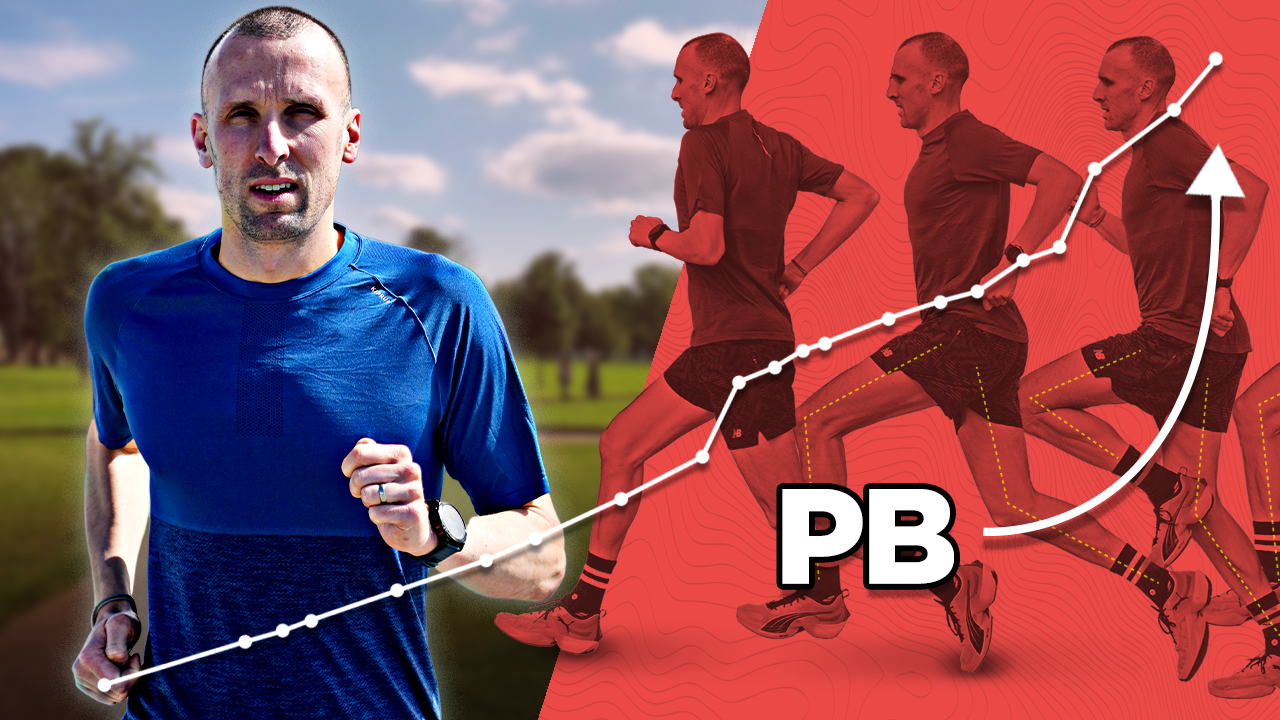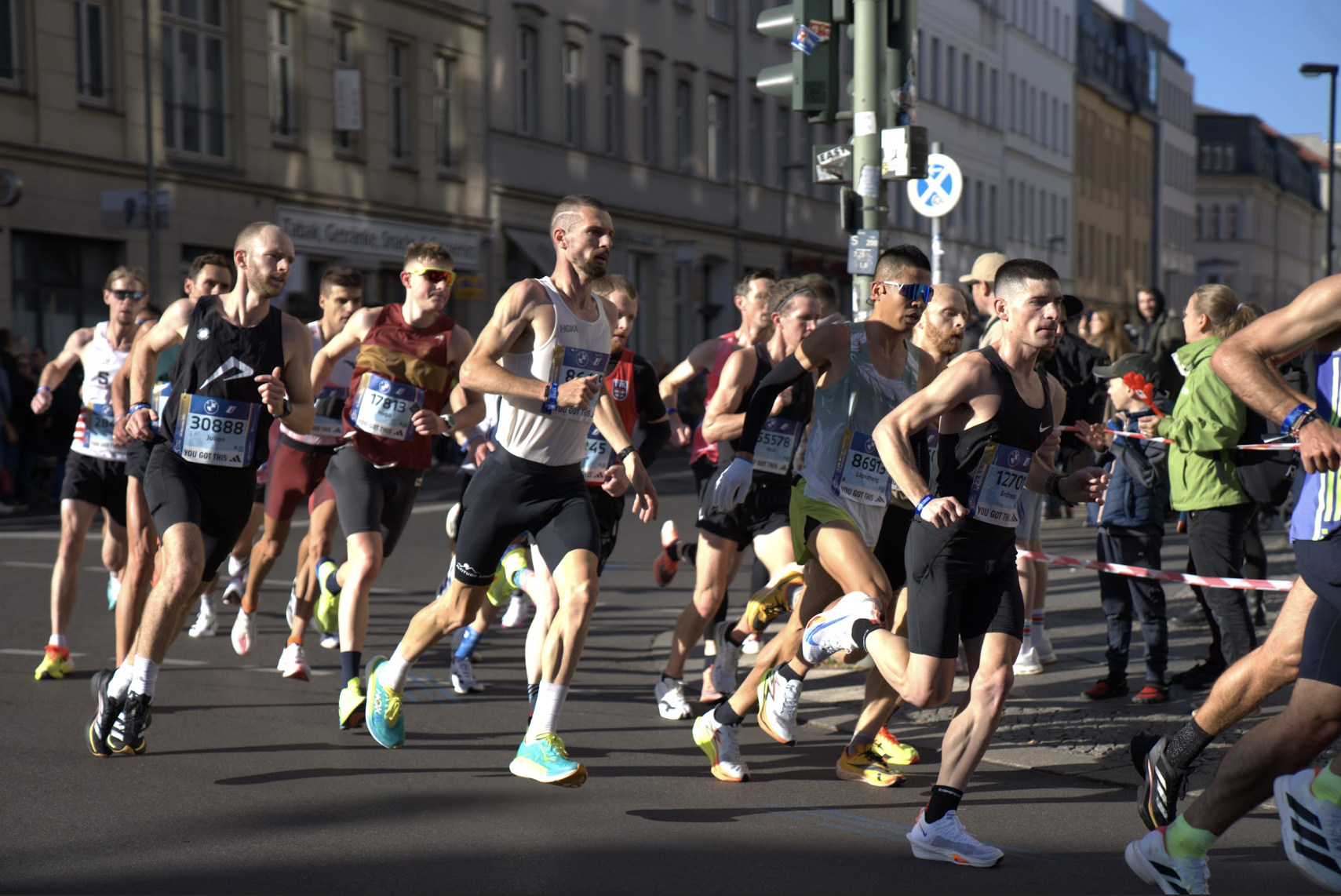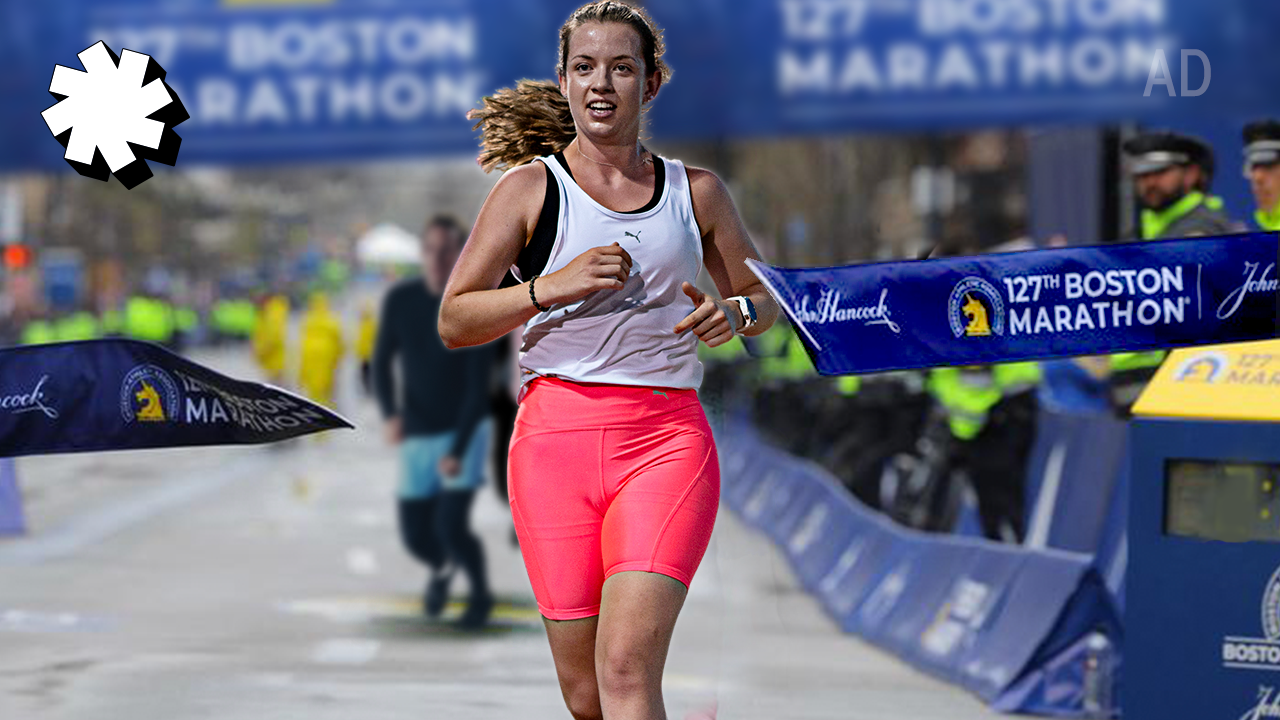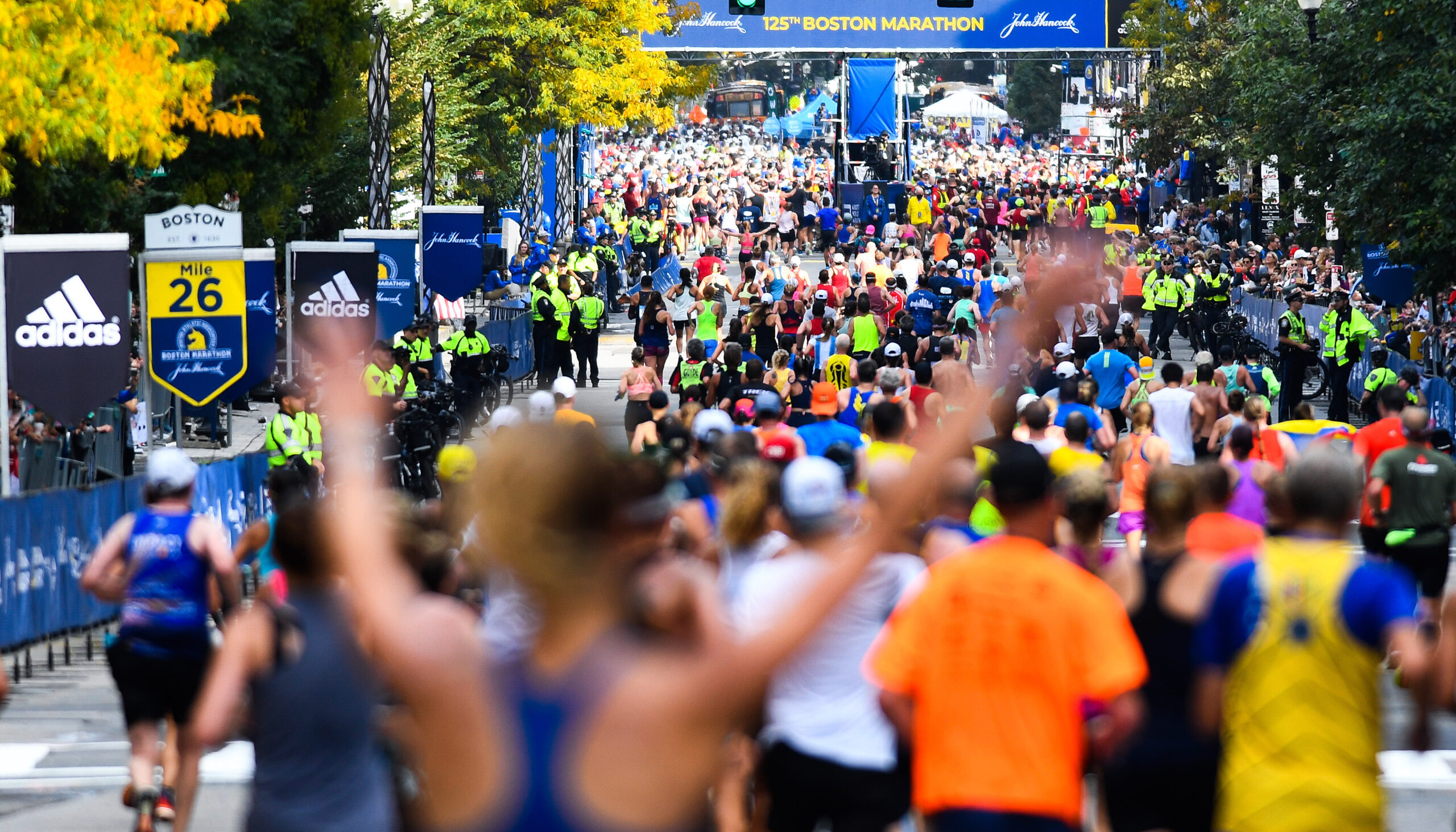The 10 Best Workouts To Run A Faster 5km!

So you’re ready to run a faster 5km and you want to know how to do it? We’ve got 10 of the best interval workouts and speed sessions to help you run your best 5km yet!
INTERVALS, WORKOUTS, SPEED SESSIONS, REPS… WHAT’S ALL THIS ABOUT?
It might sound obvious but the best way to run faster is to… practise running faster! Most of our training is based on slower and easy running, but once or twice a week we want to do specific running workouts which challenge us by running shorter, faster intervals.
An example of a speed session might be 5 x 2 minutes, where you run each two minute repetition, or rep, as fast as you can sustain for the two minutes. After each rep you’ll have a short rest (around 60 seconds) to recover.
When we’re training specifically for a distance like a 5km (plus 10km, half marathon or marathon), we want to practise running at our goal race pace, and also running faster to build up a greater endurance for speed.
HOW DO I KNOW WHAT PACE TO RUN?
The easiest way to figure this out is to use an online pace calculator (the V.O2 pace calculator is the most comprehensive). You can put in your goal 5km time and it’ll give you details on what pace that is in kilometres and miles, plus it’ll break down splits for shorter reps.
A general guide is that your 5km pace should be challenging but should be something you can sustain for the duration of the run – you don’t want to go out too fast and then blow up and have to slow down or stop.
If you run a 5km as fast as you’re able to, then it should feel very difficult!
WHO ARE THESE WORKOUTS FOR?
These runs can work for everybody, but they are intended for runners who are already comfortable in completing a 5km distance and who are looking to improve their time.
All the workouts can be scaled to your fitness. You can take off reps or add some if you want more of a challenge, and each session is based on your own target pace. So whether you’re trying to run sub-15 minutes or something in the 30-minute range, it’ll be about aiming for your goal pace.
If you’re looking for some race inspiration, then here’s Andy attempting a 5km time trial.
WHY ARE INTERVALS IMPORTANT FOR RUNNING 5km?
Intervals help to build both your speed and your speed endurance. These are both important in a 5km where you want to be able to run at a speed which feels fast for you, and also be able to hold that pace for the duration of your 5km.
By running workouts like we suggest below, you’ll be working at and around your goal 5km pace which helps to prepare your body for your 5km attempt.
You should also add in strides as part of your warm up for each of these sessions. Strides are short, fast accelerations which get your legs moving very quickly and they are a great way to build up your ability to run fast – as well as being a great way to prepare your body before you run intervals.
DO YOU REST AFTER EACH INTERVAL?
Yes! The rest or recovery after an interval is important to catch your breath and let your heart rate come down, before starting the next rep.
Sometimes you will jog the recovery, other times you will walk it or even have static rest. Some people prefer to jog their recoveries, while others find that walking is better for them. If you find that jogging doesn’t allow your heart rate to recover well enough, or that you aren’t moving with good form, then walking might be the best choice for you.
The length of the rest depends on your fitness and the type of interval, but it will typically be between one and four minutes (or 100m-400m if you’re walking or jogging).
As you get stronger, you can increase the rep distances and decrease the recovery to prepare yourself for race day.
The focus on all of these sessions is to be able to complete each rep around your target pace for each one. If you don’t feel recovered enough after each rest then slow down, walk, stop, or even increase the rest period.
WHERE SHOULD I RUN THESE WORKOUT SESSIONS?
Ideally choose somewhere relatively flat where you don’t need to take very tight turns or cross streets (you don’t want to worry about tripping up a curb or stopping for traffic while running fast!). A park with wide, long paths is ideal, or you could head to your local running track. Many of these can also be run on a treadmill.
If you have a running watch, you should be able to add the workout to your watch to let it guide you –that’s not essential but it makes it easier to properly follow the workout.
TIPS FOR THESE 5km WORKOUTS
For each of these workouts you should run a warm up, which could be anything from 1km to 5km. Then do some dynamic stretches and drills. When you’re finished with the session, try running a short cool down (5-15 minutes).
The total volume of each of these workouts will be more than 5km. This is because we’re aiming to build up general running fitness and then add on the race-specific paces, with most of the harder running adding up to 4km-7km. So with a warm up and cool down, these workouts will likely be 8km-12km for most runners.
Don’t worry if you run the first rep too fast or too slow. It can take some time to get familiar with the right pace. If you’re a few seconds off then that’s fine, just focus on running controlled efforts with good form.
Check out this story if you want to know exactly what happens to your body when you run 5km.
10 GREAT WORKOUTS TO RUN A FASTER 5km
5 x 1km
This is your bread and butter 5km workout. Run each 1km at your goal race pace (or slightly quicker). Take 90 seconds of rest between each rep (walk or jog it). This is one of the best sessions to get used to running at the pace you want in your 5km race. If you want to make this more challenging then you could do 6-8 x 1km.
3 x 1 mile
Similar to the 5 x 1km workout, only here you’re running fewer reps but further on each one. Aim for race pace or slightly faster on each one. Keep the recoveries to 90-120 seconds. If you want to make this more challenging then you could do 4-5 x 1 mile. As you get closer to your race, try this with just a 60 second recovery between each.
3km, 2km, 1km
Run the 3km just slower than your goal 5km pace (around 10km pace), then go straight into 2km at your 5km pace, then finish with an even faster 1km. This helps to build your tolerance for running faster as you get more tired.
5 x 800m, 8 x 400m
Andy used this one to help him run a sub-16 minute 5km. Each reps are over-unders, meaning alternating between slightly slower than 5km pace, and slightly faster. For example, if you want to run a 25-minute 5km, you’d run the reps at 5:15 and 4:45 pace. Take two minutes rest after the 800s, and one minute after the 400s. Here’s Andy talking you through the workout:
2000m, 1600m, 1200m, 1000m, 800m, 400m, 200m
Descending distances with increasing speeds. Begin at 5km/10km pace and then try to get faster for the 1,000m reps down to the 200. This is good to run on a track, but is fine on the road. If the volume looks too high for you then skip the 2km rep. Take two minutes jog or walk recovery between reps.
8-12 x 400m (200m recovery)
A good track workout for 5km training. Aim for each lap to be as fast as you can run for 400m, then either walk or jog 200m before the next rep.
2km tempo, 4 x 400m faster, 2km tempo
A tasty sandwich of a workout! Run the 2km tempos at 5km-10km pace, then run the 400m reps at a faster pace. Take 60-90s between each rep. Try and hold onto tempo pace for the second 2km, or even push it down to 5km pace.
1 x 1600m, 2 x 800m, 4 x 400m, 6 x 200m
This is a good track session which includes lots of faster running. Start out at 5km effort, then increase the pace on each rep. Take half the distance to recover (so 800m, 400m, 200m, 100m).
5km tempo (or progression) run
This helps you get familiar with running a full 5km at a fast pace. Your tempo speed will likely be a little slower than your race pace (10-20 seconds per km). If you’re feeling good, then run the final kilometre at race pace or faster to simulate a strong race finish. Or you could treat this one as a progression workout and try to run each kilometre slightly faster than the previous one, finishing with a rep faster than goal pace.
3km tempo into 5-4-3-3-2-1 minutes
This is Sarah’s favourite 5km workout. Run 3km at half marathon pace and then jog for three minutes. then comes the fun part: run 5 minutes at 5km race pace, then 4 minutes, 3 minutes, and so on. Take 60 seconds walk recovery between each rep. While the time you run gets shorter, these reps don’t get easier and it’s a great way to build up race fitness. Here’s Sarah and Mo running the session and telling you more about training for a 5km.
***
Do you have a favourite 5km workout that you always like to take on?



























Running News
Ingebrigtsen Stars at World Athletics Indoor Championships 2025 – Plus All The Winners!
Sam Ruthe Is First 15-Year-Old To Run A Four-Minute Mile!
Eliud Kipchoge Will Run The 2025 Sydney Marathon!